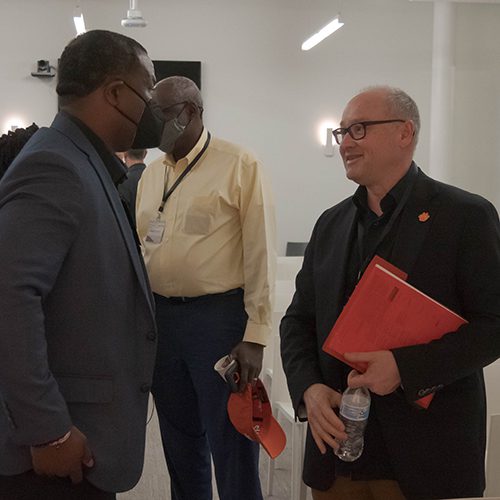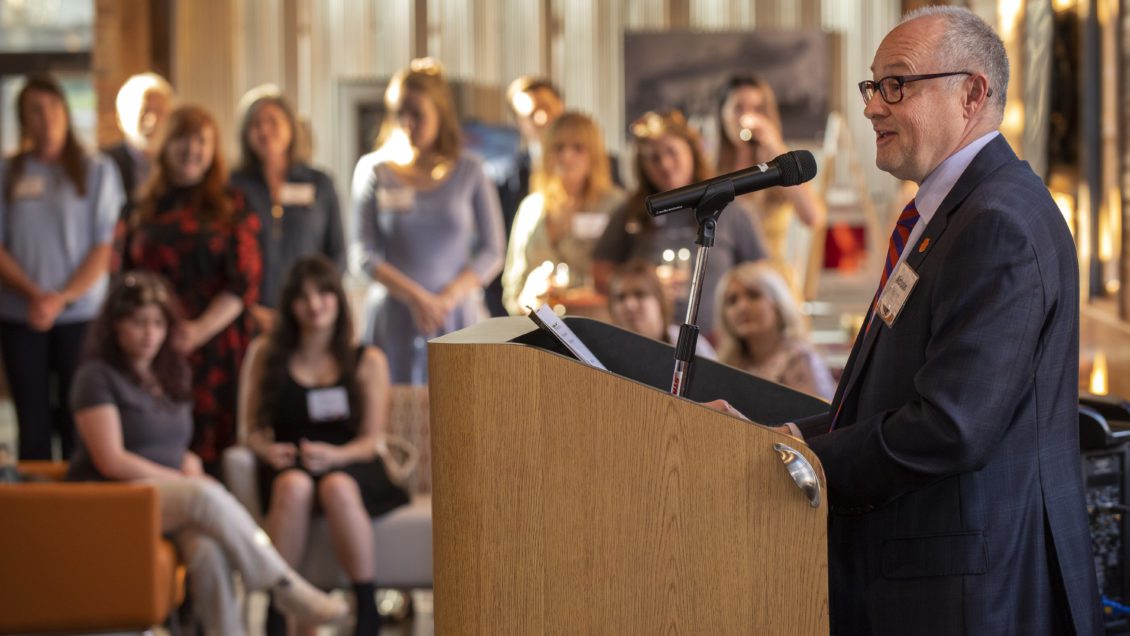Dear Faculty, Staff, Alumni and Friends,
It’s Women’s History Month, and so what better moment to celebrate the literally unprecedented endowment gift of $500,000 to our interdisciplinary Women’s Leadership Program from Georgia Callahan, with the intention of making additional contributions to achieve a $1,000,000 investment over the next decade. In a few short years, but with the enormous and unflagging efforts of one lone faculty member, Professor Diane Perpich, Women’s Leadership has attracted some of the best students at Clemson, made it to almost 50 majors and transformed many lives in the process. The gift is a gigantic vote of confidence and a shot in the arm when we need it the most. So, thank you Georgia for your generosity and your belief in the program, and thank you Diane for your vision and for the tenacity to see it through.
As if this weren’t enough for one month, we have a tremendous accomplishment in Architecture to celebrate as well.
This past weekend, the Clemson chapter of the National Organization of Minority Students in Architecture (cNOMAS) held a conference at the Clemson Design Center in Charleston. Its purpose was to bring people together to talk about the critical issues facing the built environment today and the way we tell and retell our history. Most importantly, it was an attempt to be more honest about the realities for those individuals who have historically not been welcome in the world of architecture, unless it was to do the heavy labor of actually building the structures. It was about facing the disparity between our nation’s founding principles and the challenge to make those principles a reality.

The conference more than delivered on this promise. Some highlights included School of Architecture alumnus Michael Allen (recently featured in Clemson World Magazine), candidly describing his childhood and his circuitous path to becoming an architect. He talked about being Black and growing up in an environment where the prospect of becoming an architect was an unimagined concept. He talked about feeling that he didn’t belong, about trying to assimilate, and about gradually arriving at a place where he could succeed in his own way. It was raw; it was brave; and for me, it put a name and a face to what are millions of similar stories, but all too often with heartbreaking outcomes.
Speaking of raw, Professor Rhondda Thomas, faculty director of the Call My Name Project, gave a lecture that reviewed the history of the area we call Clemson from the 18th century through today. Much of the history has been coming to light in recent years, but some of this was brand new, including details about Rudolph E. Lee, the Clemson faculty member after whom the Lee complex has been named. I expect we will be hearing more about this in the near future.
There is history, but there is also hope. There is no way to change history, but we can and must talk about it, and do so honestly. Otherwise, I am not sure what there is to hope for. At the risk of being presumptuous, I will say there can be no righting of wrongs, and no single act of healing, but an event like the one I experienced this weekend, organized by young people who will be leading us into the future, is surely a sign for hope.
So a huge thank you and congratulations to the students—Michael Urueta, Adrianna Spence, Seth Moore, and others—who organized the event, and to the faculty advisors—Clarissa Mendez, David Allison, Ray Huff—who do this work not out of obligation but out of commitment.
“Go Tigers!”
Nicholas Vazsonyi, Dean
College of Architecture, Arts and Humanities
Follow Dean Vazsonyi on Twitter and Instagram.
Get in touch and we will connect you with the author or another expert.
Or email us at news@clemson.edu

